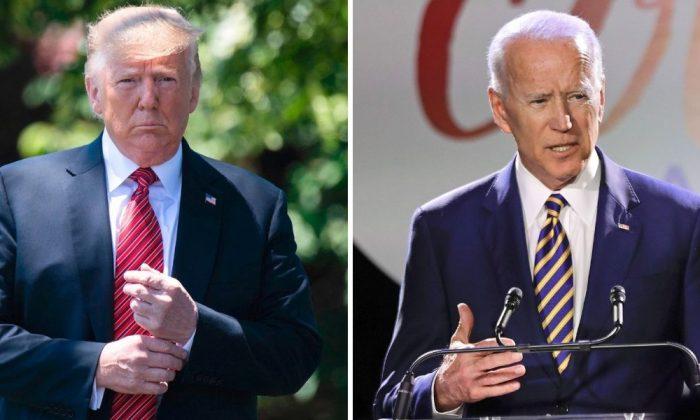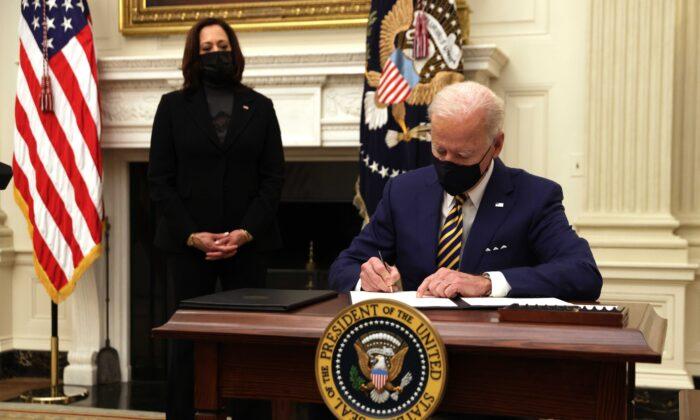A little over two months from now, American voters will have a choice to make: Vote for President Donald J. Trump and Vice President Mike Pence, or for former Vice President Joe Biden and California Sen. Kamala Harris for president and vice president of the United States. There are other options: to not vote, or to vote for a third-party candidate. The one certainty: Those who don’t vote or who vote for a third-party candidate will not have a chance to vote for the winning team.
Either Trump/Pence or Biden/Harris will be the winning team, even though it might take more than one night to identify the winner if there are challenges in the vote counting. In 2000, the George W. Bush/Al Gore contest was not decided until Dec. 12, when the Supreme Court decided in favor of Bush’s team, leading to Gore’s concession the next day.
Let’s be clear: The Electoral College’s 538 electors decide who gets elected. A candidate has to win at least 270 of those votes to win (hence the name of the 270toWin.com website, which tracks the election). Makes you wonder how Democrats can continually win the popular vote and lose the election—until you realize that they typically do so by winning large urban areas but losing rural areas.
Each state has as many electors as it has senators and congressional representatives combined. California has 55, while Delaware has 3. The adoption of the 23rd Constitutional Amendment gave the District of Columbia the same number of electors as the state with the smallest number.
Almost all of the states allocate their electoral votes on a winner-take-all basis. For example, if the California popular vote is a win for the Democratic candidate, he or she would win all 55 electoral votes.
Two states, Nebraska and Maine, allocate their electoral votes differently. Each winner of the congressional district popular vote wins one electoral vote, with the state winner winning the two statewide electoral votes.
The Electoral College process has resulted in five instances of presidents winning the election but losing the popular vote. The first, in 1824, resulted in no one winning the Electoral College. The winner (John Quincy Adams) was decided by the House of Representatives in February of the following year.
The election of 1876 between Rutherford B. Hayes, the Republican governor of Ohio, and Samuel Tilden, the Democratic governor of New York, resulted in Hayes becoming president due to an unwritten 1877 compromise. The compromise? The four states with 20 uncommitted electors pledged them to Hayes on the condition that the Republicans agreed to pull federal troops out of the South. This led to the end of the Reconstruction.
Once the federal troops were removed, many white Republicans fled the South, and control of the Southern state political structure was solidified by Democratic “Reedeemers,” who went on to disenfranchise blacks.
In 1888, Republican Benjamin Harrison beat Democratic incumbent Grover Cleveland by winning a majority of the electoral votes despite losing the popular vote.
In 2000, Republican nominee George W. Bush lost the popular vote to Democratic nominee Al Gore. This past election, Democratic nominee Hillary Clinton won the popular vote, but Donald Trump won the presidency by winning 304 Electoral College votes.
While these two elections might be used as examples of why we should change the Electoral College, the fact is, if the process were changed, then the candidates would change their campaign approaches. In the current process, much of the time, energy, and money of the campaign is spent on swing states, states that might flip from one party to the other. But these swing states change over time.
If there were only a national popular vote, then every vote would count the same. Metro areas would be more valuable places for candidates to campaign, and small states could simply be ignored.
The founders created a complex system that balances popular votes, the federal system, state size, and an understanding that pure democracy could lead to rule by a simple majority and leave little room for political compromise. As Benjamin Franklin reportedly said, “Democracy is two wolves and a sheep deciding what to have for dinner.” You can guess how that would end up.
So next time you hear someone say, “But he lost the popular vote,” respond, “Yes, and that’s how the system works. The winner of the Electoral College wins.”





